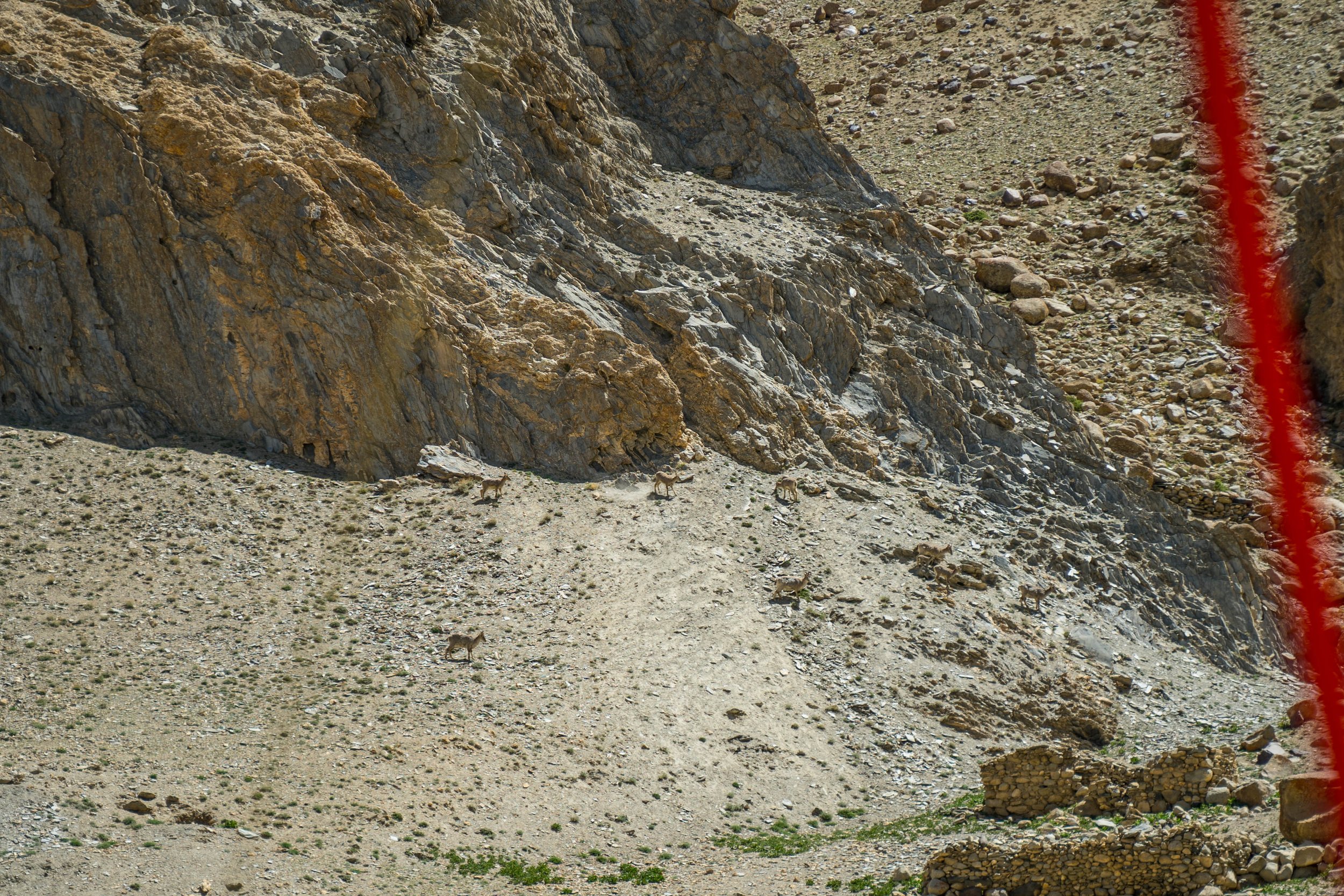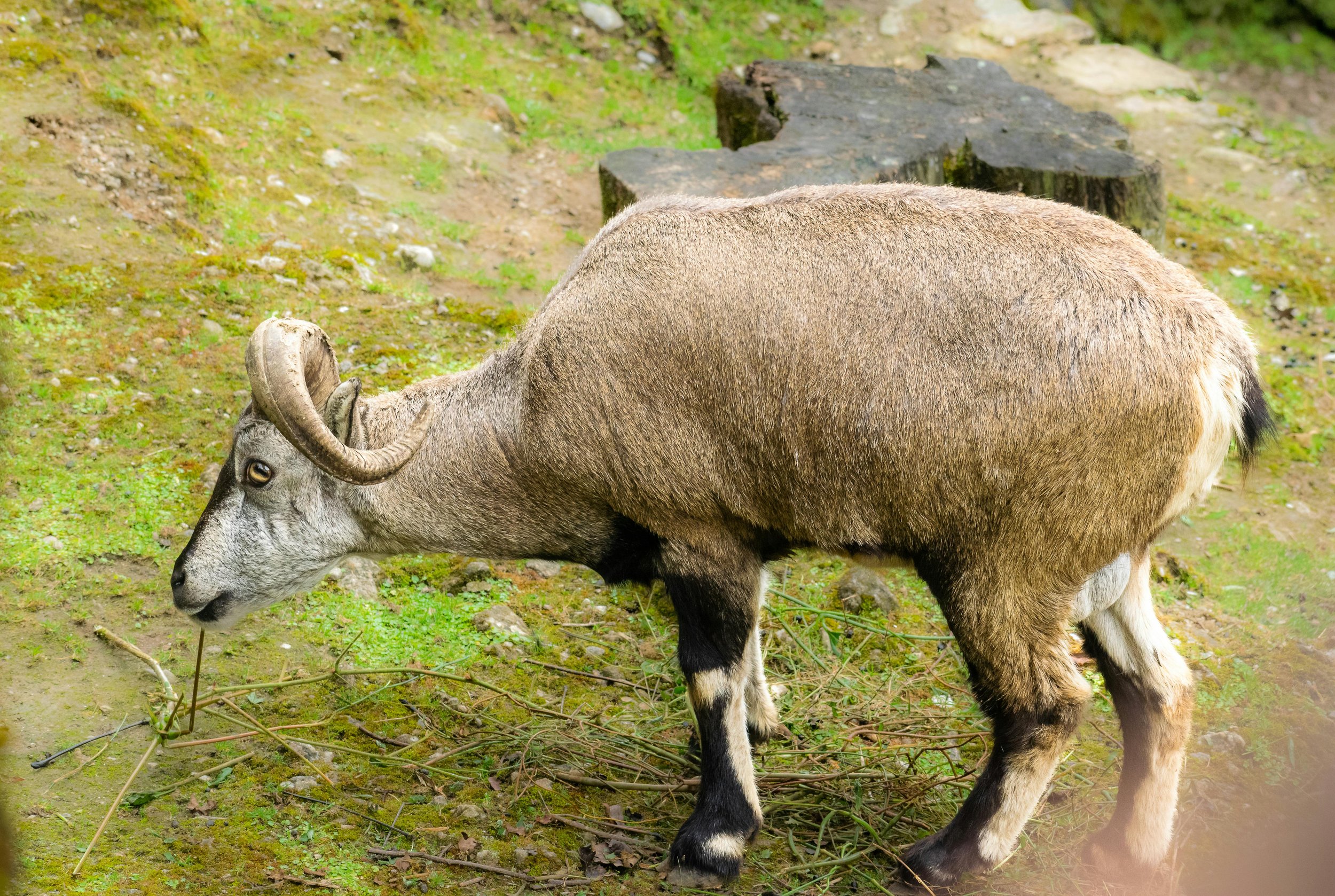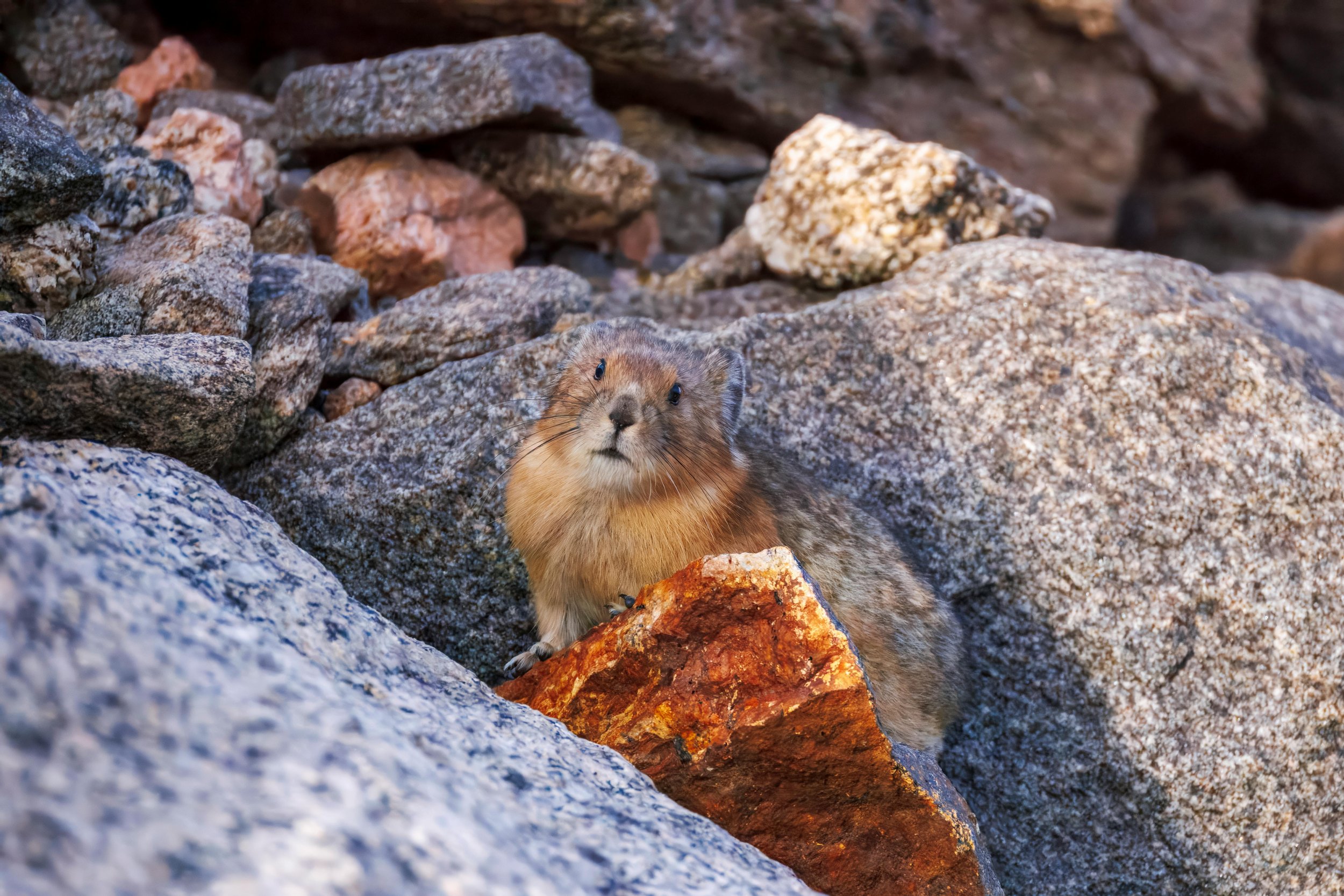Paws, wings and Peaks: wildlife wonders in Ladakh
Ladakh’s landscapes are rocky and barren. Could there be wildlife in such a vast, rugged desert? While I was trekking through the different coloured rocks and dusty valleys, it often seemed impossible.
Then… Something moves! Suddenly it looks like a patch of the hillside is moving. Is it haze from the heat? A trick of the light? No - it is a rare herd of blue sheep!


The name ‘blue sheep’ isn’t quite accurate. They are actually goats, and more of a grey colour than blue. One stands on the ridge, its perfectly still silhouette looking like just another oddly shaped rock. Another stands perfectly still halfway up a cliff, blending in perfectly with the rocks behind. Then it breaks - bounding gracefully down the near vertical cliff face and bounding onto the scree below, releasing a cloud of dust.
The seemingly barren landscape supports other wildlife, too.
The cute Pika rodents were a common sight to see while trekking in the Markha Valley, but their shrill warning calls were heard even more often. During summer they collect and pile up grass to see them through the harsh winters. Although it was only the start of summer we saw some already impressive piles outside their burrows.


Cheeky cubby marmots were an always welcome sight. The young often squabbled, standing on their back legs, wrestling, and hitting each other with their teeny t-rex arms. Then they’d collapse on top of each other, bound off, and chase each other.
A marmot chilling on the grass - courtesy of Imad Clicks
Over the first few days of the trek, black billed magpies waddled slowly around our campsites, their feathers sheening blue in the sun. We also spotted a magpie’s nest in the top of a poplar tree - piles of sticks and mud painstakingly carried up one by one into the fork of the tree. They keep the same nest for several years, which explains why they are such large structures.
We saw a variety of other birds in all different colours - from tiny yellow headed citrines, up to magnificent circling birds of prey. Chukar patridges were a common sight, tottering along rocky slopes and across rock walls. Like the blue sheep, they are perfectly camouflaged when standing still.
A Chukar partridge - courtesy of Ezvedat.
At one campsite, there was the largest raven I had ever seen. It chased away the red-billed choughs - but they quickly came back after it left, in their usual graceful manner, swooping playfully in the wind and thermals.
While climbing up to a 5,200m pass, several members of our party spotted a lone Kiang (Tibetan Wild Ass). On the drive home, we saw entire herds of the graceful animals grazing the grasslands.
One night at dusk, our keen-eyed guide spotted fox sniffing around near the campsite - presumably looking for Pika to prey on. Two night’s later, there was another fox, this one more interested in our campsite (particularly the kitchen tent!) I saw its eyes gleaming in my headtorch when I went to the loo. When I emerged from the toilet, it was sniffing around the kitchen tent. Our crew kept an eye on it to ensure no supplies went missing!




In Ladakh there are also many villages and families who rely on the milk, meat, wool and income from herds of livestock (primarily yaks and sheep). We spent a night at a doksa (herders’ camp) with 6 amazing women who were looking after 80 female yaks (demos) and their cute babies - part of Nadi’s cultural immersion experience. They milked the huge animals, made butter, cheese and yogurt (which they fed us a lot of!) and scared off wolves at night. They were truly inspiring to me - someone who was intimidated by the large size and pointed horns of the demos!
Perhaps the rarest animal we spotted in our time was a herd of Argali. These are the largest wild sheep in the world, and have impressive horns. They didn’t jump around acrobatically like the blue sheep, rather stood and gracefully grazed.
A herd of Argali, seen through binoculars.
We also heard snow leopards barking, but didn’t have the privilege of seeing the illusive beasts. Maybe next time!
Note to myself and to you: a good pair of binoculars is essential for spotting wildlife while trekking in Ladakh, because the landscapes are so expansive. I’ll pack my own next time, so I don’t have to share!




